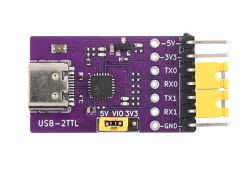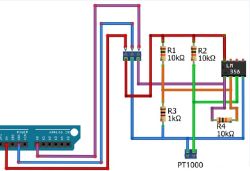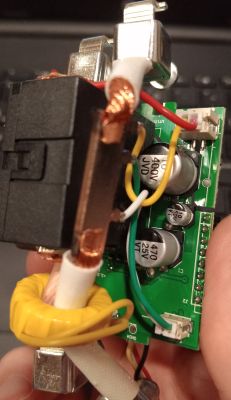FAQ
TL;DR: Captured dimmer packets show dpID 2 varying 0–570 on a 0–1000 scale [Elektroda, p.kaczmarek2, post #20528459] "Really very useful" [Elektroda, p.kaczmarek2, post #20528459] Analyzer v0.5 adds pause and crash fix [Elektroda, p.kaczmarek2, post #20729095]
Why it matters: Faster decoding lets you free Tuya devices from the cloud in minutes.
Quick Facts
• Supported UART baud rates: 9600 bps and 115200 bps [Elektroda, p.kaczmarek2, post #20630487]
• Minimum hardware: 1× USB-to-UART dongle + 5 V feed to on-board AMS1117-3.3 V regulator [Elektroda, p.kaczmarek2, post #20528459]
• Dual-port sniffing added in version 0.2 (may reorder packets due to SerialPort lag) [Elektroda, p.kaczmarek2, post #20562010]
• Latest GUI release: v0.5 (pause, copy buttons, datetime crash fix) [Elektroda, p.kaczmarek2, post #20729095]
• Limitation: Raw dpIDs in ≥ PLN 100 DIN-rail meters remain undecoded [Elektroda, p.kaczmarek2, post #20528459]
What exactly does TuyaMCU Analyzer do?
It splits every 0x55AA-framed UART packet into command, length, checksum and per-dpID fields, then labels each dpID with type (bool, value, enum, raw) and the captured value [Elektroda, p.kaczmarek2, post #20528459] This lets you see, for example, that dpID 1 toggles a relay and dpID 2 controls brightness.
Which hardware is the minimum required to sniff packets?
One USB-to-UART converter (≈US$2) and three wires—RX, TX, GND—are enough. Feed 5 V to the board before the AMS1117-3.3 V regulator so both Wi-Fi and MCU run safely at 3.3 V [Elektroda, p.kaczmarek2, post #20528459]
How can I capture packets without mains risk?
Power the device from the USB 5 V line, not from the live mains. If the internal PSU is isolated, mains feed is possible; otherwise use an opto-isolated UART or battery pack [Elektroda, DeDaMrAz, post #20632329]
Which baud rate should I try first?
Most TuyaMCU boards talk at 9600 bps. If nothing appears, switch to 115200 bps and press “Change” in the GUI to apply it [Elektroda, p.kaczmarek2, #20630423; #20630487].
The analyzer shows no data—could my board lack TuyaMCU?
Yes. Confirm a second microcontroller is present and powered. If flash dump reveals “baud” strings at 0x1F000 offset, TuyaMCU is likely present [Elektroda, p.kaczmarek2, post #20631789]
Can the program decode Raw dpIDs from energy meters?
No. High-end DIN-rail meters (> PLN 100) bundle several measurements in one Raw dpID with device-specific format; the analyzer cannot interpret it automatically [Elektroda, p.kaczmarek2, post #20528459]
How do I run a dual-UART capture?
Choose two COM ports in v0.2+, start capture, then operate the device. Expect occasional request/reply mis-ordering because of C# SerialPort latency [Elektroda, p.kaczmarek2, post #20562010]
Is packet order always reliable?
No. Dual-port mode can swap adjacent packets when the PC buffers unevenly. Re-sort them manually with the Compare Tool to avoid mis-mapping dpIDs [Elektroda, p.kaczmarek2, post #20562010]
How do I map decoded dpIDs to OpenBeken channels?
Use autoexec.bat lines:
- setChannelType
- linkTuyaMCUOutputToChannel
Example: linkTuyaMCUOutputToChannel 1 bool 1 links dpID 1 to channel 1 [Elektroda, p.kaczmarek2, post #20528459]
What new features arrived in versions 0.4 and 0.5?
v0.4 added heartbeat hiding, color decoding for lights, ASCII/HEX toggle, and window maximization [Elektroda, DeDaMrAz, post #20723748] v0.5 fixed datetime crash, added capture pause, and “copy raw/decoded” buttons [Elektroda, p.kaczmarek2, post #20729095]
Can I extend decoding with my own specifications?
Yes. A new XML-based engine lets you define commands, enums, and repeating blocks; each user can localize labels and calculations [Elektroda, theosoft, post #21284085]
Give me a 3-step basic capture procedure.
- Connect dongle RX to TuyaMCU TX and ground to ground.
- Start RealTerm in “Hex + spaces”, click “Capture to File”, then power the board.
- Operate the device, stop capture, and paste hex into Analyzer [Elektroda, p.kaczmarek2, post #20528459]






